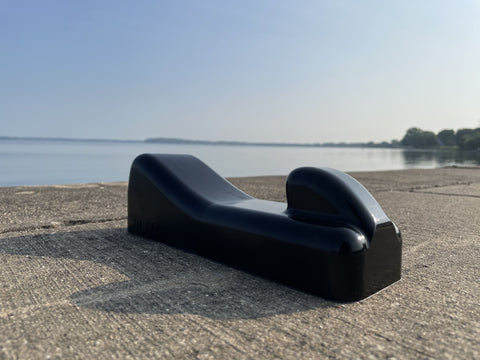There is nothing quite like the feeling of a good massage. Whether you are seeking stress relief from working out or looking to relieve tight knots in your muscles, finding the right massage tool can be difficult. With so many massage tools on the market it can be tough deciding which one is right for you. Two popular options are the “QL Claw” and the common massage stick. While both products are designed to promote mobility and alleviate soreness, the QL Claw and massage stick have some key differences that you should be aware of before buying. In this blog post, we will take a closer look and explore the benefits each tool has to offer.

What To Expect
Just by looking at the Massage Stick next to the QL Claw, there is a noticeable difference in shape and function. The massage stick is equipped with a rolling accessory, while the QL Claw is one solid structure. In the massage stick's case, the purpose of this function is to roll over the surface of the muscle, in attempt to relieve muscle pain or soreness. The QL Claw on the other hand is designed for deeper muscle penetration and trigger point relief.

Trigger points are sensitive, tension-filled areas in the muscle that cause pain and stiffness. Trigger points can be released through deep-tissue muscle massage.
Benefits and Risks
Tools like the massage stick and foam roller are awesome for leg muscle soreness—especially in the quadriceps and calves.
I tend to get the most out of my massage stick pre or post leg workout.
A potential drawback with the massage stick's design is how shallow the roller reaches into the muscle. Since the massage stick is not equipped with a "hook" or "spike" to dig into the muscle, it will be more difficult to relieve deep muscle tension.
Another issue with the massage stick is the limited accessibility the massage stick has on the entire body. Because of it's design, it's near impossible to roll out other key areas of your body—notably upper body.
The QL Claw on the other hand is tailored towards pain relief. The intention behind the tool is not to relieve soreness in the quads or calves, but the lower back and the muscles surrounding it—glutes, hip flexors, QL, psoas, rhomboids, etc.
The Beauty of the QL Claw is how effective yet effortless it is to use. When going to a physical therapist or chiropractor for back or hip pain they will often break up tense and stiff muscles that have been left inactive and dormant.
The QL Claw was built to be your at home massage therapist buddy. The hook at the end of the QL Claw is designed to mimic an elbow or knuckle of a pt professional or chiropractor to release tight muscle knots. Once you've located the knot, the hook is equipped to dig deep enough to break up the tight muscle tissue.
As opposed to the back and forth rolling of the massage stick, the QL Claw is intended to stay put while you allow your muscle to sink into the hook.
Summary
Both the massage stick and the QL Claw serve useful purposes. They are both unique on-the-go tools that help deal with breaking down muscle tissue in the luxury of your own home.
The massage stick is great for athletes that are looking to decrease muscle soreness (mainly in the legs) from high intensity workouts. If you're active and find yourself fighting soreness in your quads and calves frequently, the massage stick is a fantastic tool to have around.
The QL Claw is designed for overall pain relief, increasing overall mobility, and preventing injury from trigger points. I own a massage stick and the QL Claw myself and get great use out of both, but I have benefited more from the QL Claw—it has definitely saved me multiple trips to the chiropractor.
Massage sticks are abundant, they are not hard to come by. The QL Claw is one of a kind. It serves a special purpose that you will not get out of any other therapy tools on the market.
[1] Donnelly, Joseph M. Travell, Simons & Simons Myofascial Pain and Dysfunction: the Trigger Point Manual. 3rd ed., Wolters Kluwer Health, 2019.
[2] Davies, Clair, and Amber Davies. The Trigger Point Therapy Workbook: Your Self-Treatment Guide for Pain Relief. 3rd ed., New Harbinger Publications, Inc., 2013.


